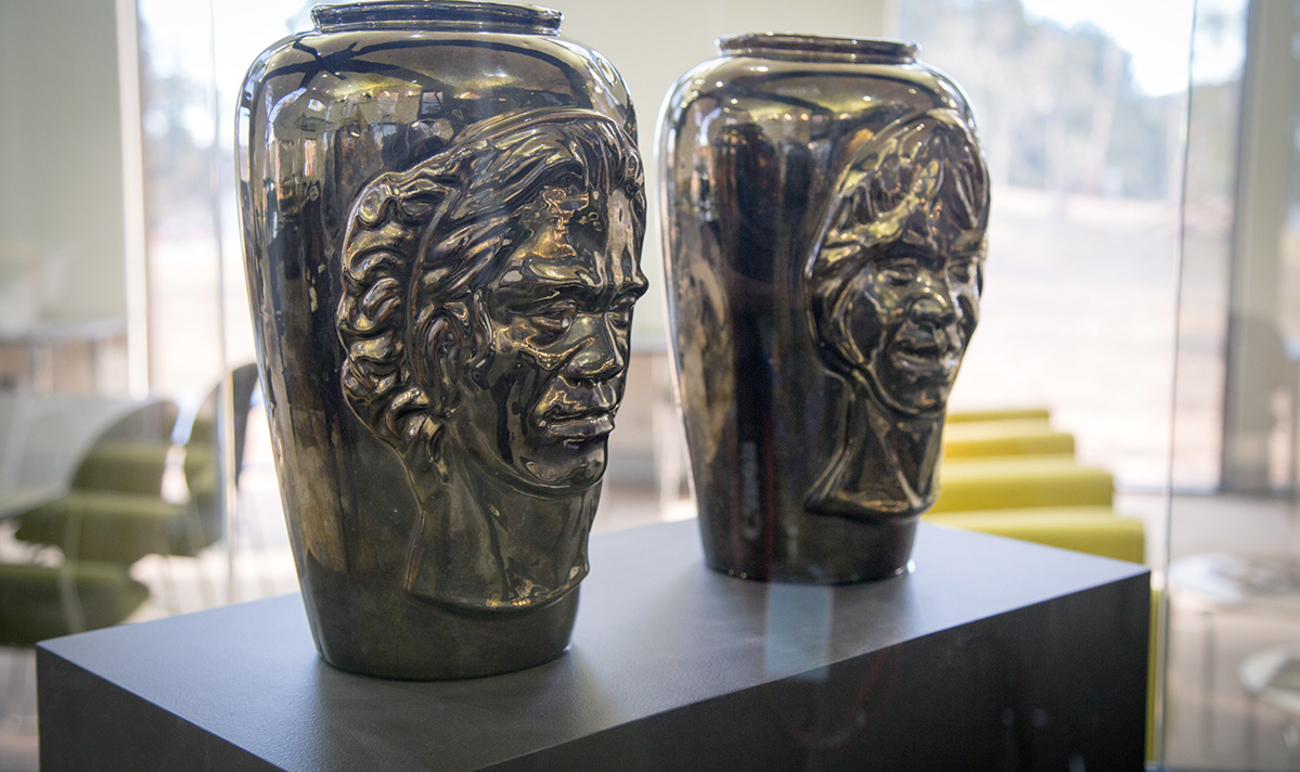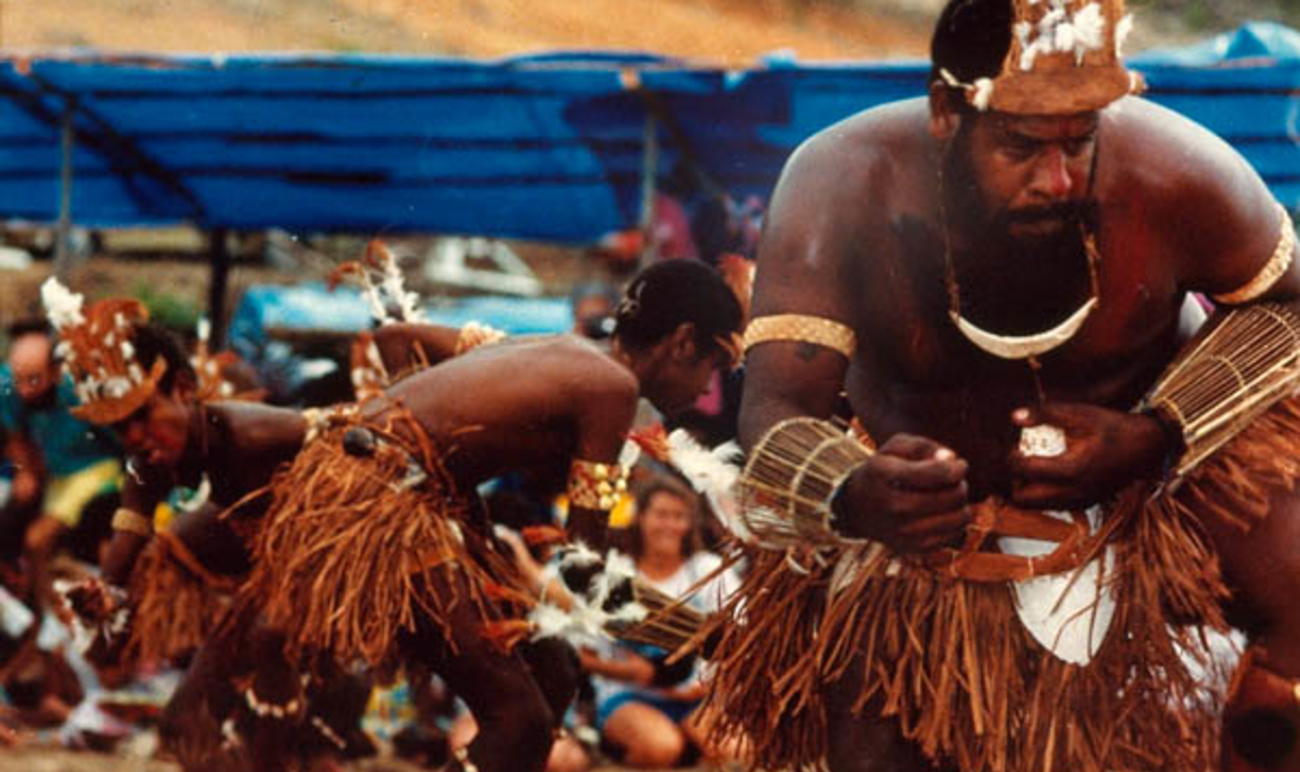In 2016, AIATSIS acquired a tiny woven object only 16cm in diameter for our Art and Object Collection. Its small size belies the complex story behind its creation.
The woven mat is one of four objects by Marilyne Nicholls held in the AIATSIS Collection. The mat is made from pine needles and raffia.
The use of pine needles as a weaving fibre emerged in the 1960s among Aboriginal women living in the Swan Hill area of Western Victoria. Many of these women were displaced from their own lands as a result of Government child removal policies but brought with them coiling weaving techniques that they continued to practice. The main fibres the women used in their weaving were cumbungi (bulrush) and various sedges. As development pressure reduced access to these sources of raw materials, the women innovated with a fibre that was found in great abundance – pine needles.
One of the early adopters of pine needle weaving was Marilyne Nicholls’ grandmother Emily Karpany (nee Pinkie) who taught Nicholls how to incorporate pine needles into traditional coiling weaving techniques.
The pine needles used in the woven works are sourced from a stand of 100 year old pine trees at Tower Hill Reserve, Swan Hill.
Tower Hill (known as Koroitj in the Dhauwurd wurrung language) (Clark, 2009) is a volcanic maar (water filled crater) in Western Victoria that has a long standing and continuing importance for the numerous clans of the Gunditjmara people (Worn Gundidj, 2015). Deep time Aboriginal occupation of the Tower Hill region is based on the preservation of food preparation equipment, material culture and middens within a 30,000 year old volcanic ash layer (Gill, 1974). Tower Hill is also important as a geological site of International significance and it was declared Victoria’s first national park in 1892.
In 2009, the pine trees on Tower Hill were selected for removal to make way for a housing development. Activism on the part of artist Marilyne Nicholls and concerned local residents led to the pines being saved and they were eventually placed on the Victorian Aboriginal Heritage Register (Heritage Council of Victoria, 2010). The creation of the mat held at AIATSIS owes its existence to these pines being saved.
Maryline Nicholls’ small pine needle woven mat carries within it the social and cultural history of continuity and change as experienced by the Aboriginal women of Western Victoria. The mat exemplifies the innovative strategies deployed by Nicholl’s grandmother that maintained coiling as a traditional weaving practice but replaced the fibre used in the weaving from cumbungi to pine needles. This innovation has continued through generations of Nicholls women with Marilyne innovating most recently through the incorporation of raffia as a fibre in her practice.
Related Items
Sources
Clark, I 2009, Reconstruction of Aboriginal microtoponymy in western and central Victoria: Case studies from Tower Hill, the Hopkins River, and Lake Boga.
Dawson, James 1881, Australian Aborigines the Languages and Customs of Several Tribes of Aborigines in the Western District of Victoria, Australia, George Robertson, Melbourne.
The Design Files 2018, Marilyne Nicholls weaver,
Gill, E 1974, ‘Aboriginal menus and cooking methods as inferred from archaeological sites in southeast Australia’, Artefact, 1974, no. 35, pp. 1-8.
Heritage Council of Victoria, 2010, Victorian Heritage Database Report – Tower Hill.
Koorie Heritage Trust 2018, Learning Circles Weaving with Pine Needles.
Parks Victoria 2002, Tower Hill Future Directions Strategy Final Report.
Worn Gundidj, 2015, Tower Hill Reserve: history and heritage.



